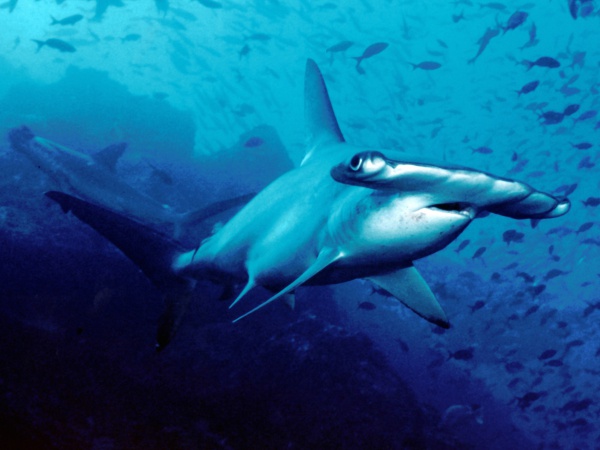Facts About Scalloped hammerhead
The scalloped hammerhead shark, known scientifically as Sphyrna lewini, is a distinguishing member of the hammerhead shark family, Sphyrnidae. The term "sphyrna" is derived from the Greek word for "hammer" aptly capturing the distinctive shape of this shark's head. Also referred to as the bronze, kidney-headed, or southern hammerhead, this species is frequently found in warm, temperate, and tropical coastal waters worldwide. Among all hammerhead sharks, the scalloped hammerhead is the most common.
Originally named Zygaena lewini, the scalloped hammerhead has undergone several nomenclatural changes before stabilizing as Sphyrna lewini. These sharks exhibit sexual dimorphism, meaning males and females differ in size. Males typically range from 1.5 to 1.8 meters in length, while females can grow up to 2.5 meters. The largest recorded scalloped hammerhead reached approximately 4.3 meters. With a high metabolic rate, these sharks are apex predators and often utilize coastal areas for breeding.
Scalloped hammerheads are pelagic, meaning they inhabit the open ocean, but they are also found over continental and insular shelves and in deeper waters. Juveniles often reside in shallow coastal regions, bays, and mangroves. Adults exhibit intriguing migratory behaviors, moving between the open ocean and mangrove areas for breeding purposes.
These sharks are known for their schooling behavior, often forming large groups while hunting. Despite their formidable appearance, they are not typically aggressive toward humans. Regarding reproduction, scalloped hammerheads have a gestation period of about 12 months and give birth to large litters, which helps mitigate high infant mortality rates. Their diet mainly consists of fish, cephalopods, and occasionally smaller sharks.
Unfortunately, scalloped hammerheads face significant threats from overfishing, especially for their fins, which are highly coveted. The species is listed as globally endangered, with populations declining sharply in recent years. Conservation efforts are underway to protect these sharks and ban harmful practices such as shark finning.

 Panama
Panama